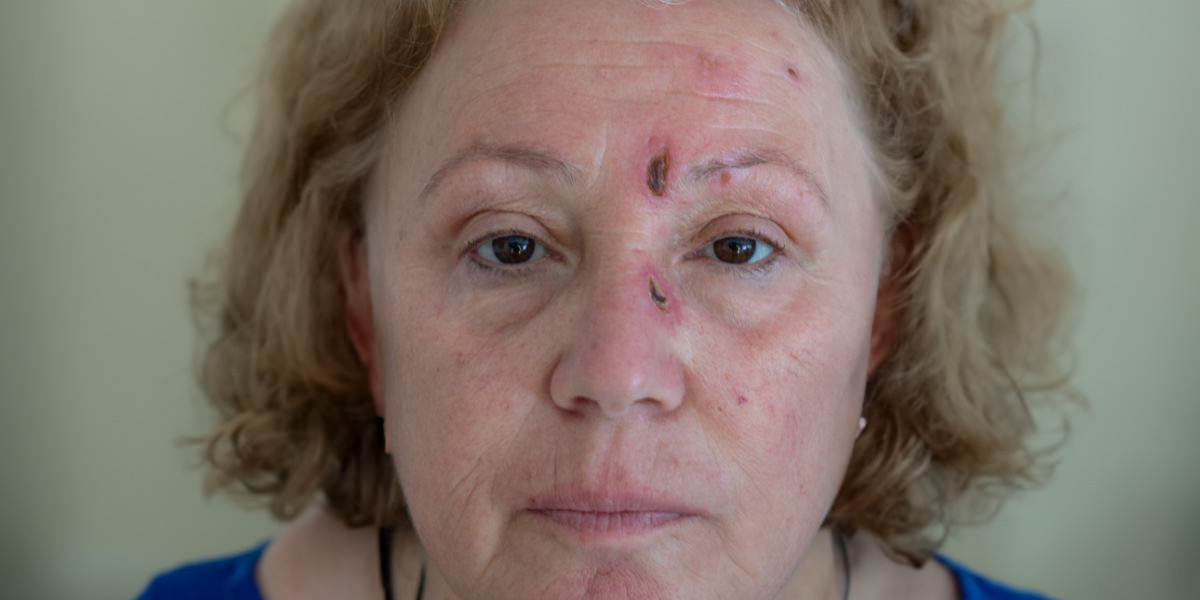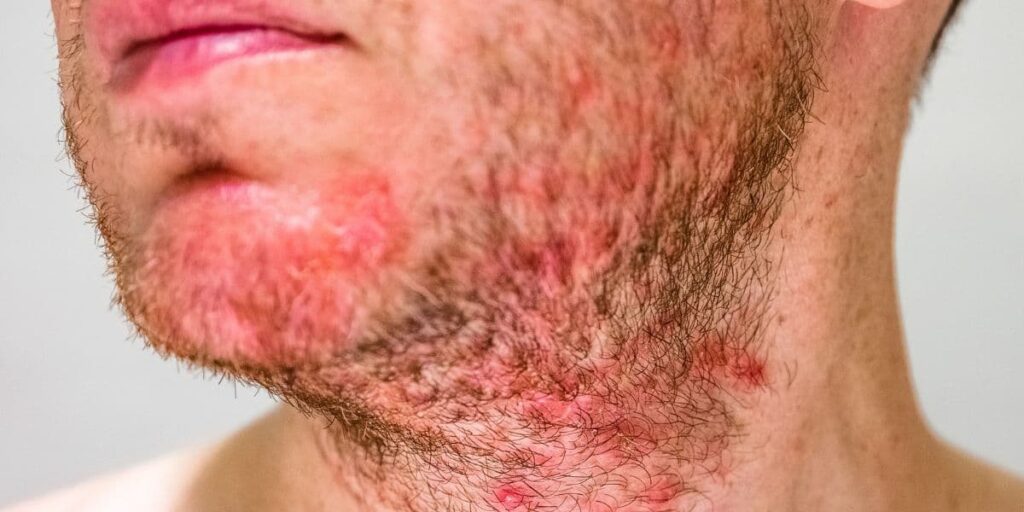What Are Meth Sores?


Meth sores are a common and painful consequence of methamphetamine abuse, manifesting as open wounds and lesions on the skin. These sores are not only unpleasant to look at but also dangerous, as they can lead to severe infections and other health complications if left untreated.
Meth sores are often linked to the compulsive scratching and poor hygiene associated with meth use, exacerbating the physical toll the drug takes on the body.
The development of meth sores can significantly increase the risk of more severe health issues, particularly when these open wounds become infected. The toxins present in meth, along with the neglect of wound care, can lead to complications such as cellulitis and abscesses, which may require medical intervention. If left untreated, these infections can spread, leading to more severe systemic conditions that threaten a person’s health.
Additionally, meth sores are often accompanied by other severe side effects of methamphetamine abuse, such as “meth mouth,” where users suffer from extensive dental decay and gum disease. These symptoms, combined with significant weight loss and malnutrition, highlight the dangerous impact of meth on the body.
What Is Meth?
Methamphetamine, often referred to as meth, is an extremely habit-forming stimulant that impacts the central nervous system. It is often found in the form of a white, odorless, bitter-tasting crystalline powder, referred to as crystal meth. Meth can be ingested in several ways, including smoking, injecting, snorting, or swallowing. Each method delivers an intense, euphoric high, which is short-lived and often leads users to consume more of the drug, increasing the risk of addiction.
Meth is known for its powerful impact on the brain, leading to a rapid release of dopamine, a neurotransmitter associated with pleasure and reward. This release is much higher than what the brain produces under normal conditions, which contributes to the drug’s addictive nature. Over time, meth use can cause significant changes in brain function, leading to various physical and psychological issues.

What Are Meth Sores?
Meth sores are open wounds or lesions that develop on the skin as a result of methamphetamine use. These sores can appear anywhere on the body but are most commonly found on the face, arms, and legs. The sores are often a result of obsessive scratching or picking at the skin, a behavior triggered by the hallucination that bugs are crawling under the skin, commonly known as “meth mites” or “crank bugs.”
Meth sores typically start as small, red bumps that can quickly become infected because of poor hygiene and the weakened immune system of meth users. As the sores are scratched and picked at, they can worsen, leading to larger wounds that may become severely infected. These infections can spread, increasing the risk of more severe health complications, including systemic infections that can be life-threatening if not properly treated.
Common areas where meth sores develop:
- Face: Especially around the mouth, cheeks, and nose
- Arms and hands: Frequent sites because of accessibility
- Legs and feet: Often affected because of neglect and poor hygiene
- Scalp: Scratching can lead to sores hidden under hair
The appearance of meth sores can vary, but they are usually characterized by their raw, inflamed appearance, often surrounded by areas of scabbing or peeling skin. These sores can cause significant discomfort and pain, contributing to the overall physical decline of people who have a methamphetamine addiction.
How Do You Recognize Meth Sores?
Recognizing meth sores is crucial for identifying methamphetamine abuse in people. Meth sores typically present as open wounds, ulcers, or lesions on the skin, which may be surrounded by inflamed or scabbed areas. These sores are often concentrated on parts of the body that are easily accessible, such as the face, arms, and hands, but they can appear anywhere.
Key signs of meth sores include:
- Red, inflamed bumps
- Scabbing and peeling skin
- Infection
- Clusters of sores
- Scarring
Recognizing these symptoms early is essential for addressing meth addiction and preventing further health deterioration. If you suspect someone has meth sores, it is critical to encourage them to seek medical help and consider addiction treatment options.
What Causes Meth Sores?
Meth sores are caused by a combination of factors directly related to methamphetamine use. The primary cause is the hallucination of bugs crawling under the skin, known as “formication.” This sensation leads to compulsive scratching and picking at the skin, often resulting in open sores. The hallucination is a common side effect of meth abuse, particularly in long-term users or those who binge on the drug.
Other contributing factors include:
- Poor hygiene
- Impaired healing
- Dry skin
- Weakened immune system
- Toxic impurities
Understanding these causes is vital for addressing the underlying issues of meth sores and seeking appropriate treatment to prevent further skin damage and complications.
Meth Abuse Effects
Meth abuse has far-reaching effects on both the body and mind, leading to severe health issues that can be life-threatening if not addressed. The effects of meth are divided into short-term and long-term categories, each presenting unique challenges and risks.
Short-Term Effects of Meth Abuse
The short-term effects of meth abuse are intense and can have immediate, dangerous consequences for the user. These effects include:
- Increased heart rate and blood pressure
- Hyperactivity and insomnia
- Decreased appetite
- Euphoria followed by depression
- Aggressive behavior
- Paranoia and anxiety
These short-term effects are just the beginning of the damage that meth can cause, with long-term use leading to even more severe health issues.
Long-Term Effects of Meth Abuse
Long-term meth addiction can cause devastating physical and psychological damage, many of which are permanent without proper treatment. The long-term effects include:
- Severe dental problems (meth mouth)
- Skin infections and sores
- Cognitive decline
- Mental health disorders
- Significant weight loss
- Organ damage
- Severe paranoia and hallucinations
These long-term effects underscore the importance of early intervention and treatment for meth addiction to prevent permanent damage and improve the chances of recovery.

Meth Addiction Treatment at White Oak Recovery Center
At White Oak Recovery Center (WORC), we understand the impact that methamphetamine addiction can have on people and their loved ones. Meth addiction is a severe condition that requires comprehensive treatment to address both the physical and psychological aspects of the disease.
Our approach to meth addiction treatment is centered on providing individualized care that meets each person’s unique needs. When you enter WORC, a team of skilled professionals welcomes you with open arms. WORC’s team of professionals is dedicated to helping every resident achieve lasting recovery.
WORC provides various evidence-based treatments and therapies to help with the complicated issue of meth addiction, such as medical detox, dual diagnosis treatment to treat co-occurring mental health disorders, medication-assisted treatment, cognitive-behavioral therapy, and various others.
At WORC, we also emphasize the importance of long-term recovery support. This includes aftercare planning and ongoing counseling services to help residents maintain their sobriety and rebuild their lives. Our supportive environment, combined with a strong focus on mental and physical wellness, ensures that each person receives the care and encouragement they need to overcome addiction and move forward with their lives.
If you or someone you love is struggling with meth addiction, White Oak Recovery Center is here to help. Our compassionate and experienced team is dedicated to providing the care and support needed for lasting recovery.
Contact WORC today. Our treatment specialists are eager to help you find the proper treatment for your needs.

Am I covered for addiction treatment?
Your insurance may cover treatment. Call now for an entirely free and confidential assessment. Recovery starts with a phone call.

- Roman-Sosa, Jessica, et al., “Methamphetamine Alters the Antimicrobial Efficacy of Phagocytic Cells During Methicillin-Resistant Staphylococcus Aureus Skin Infection.” American Society of Microbiology, Dec. 2015.
- “Methamphetamine in Wisconsin.” Wisconsin Department of Health Services, Jul. 2024.
- Salamanca, Sergio A., et al., “Impact of Methamphetamine on Infection and Immunity.” Frontiers in Neuroscience, Jan. 2015.
- “Commonly Used Drugs Charts.” National Institute on Drug Abuse, Sep. 2023.
- Aiempanakit, Kumpol, “Crusted Scabies in a Patient with Methamphetamine Abuse.” JAAD Case Reports, Jun. 2018.
Medical Disclaimer:







